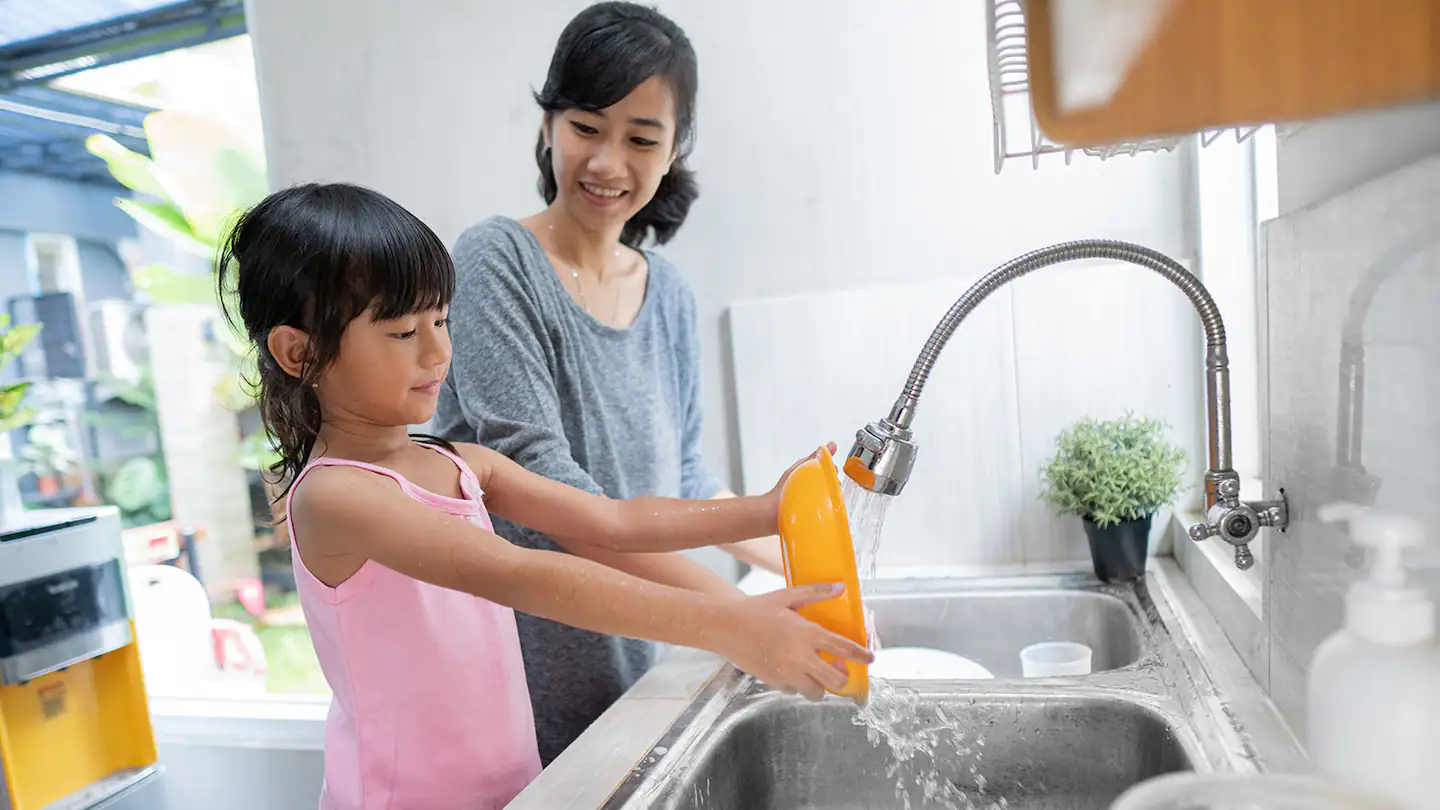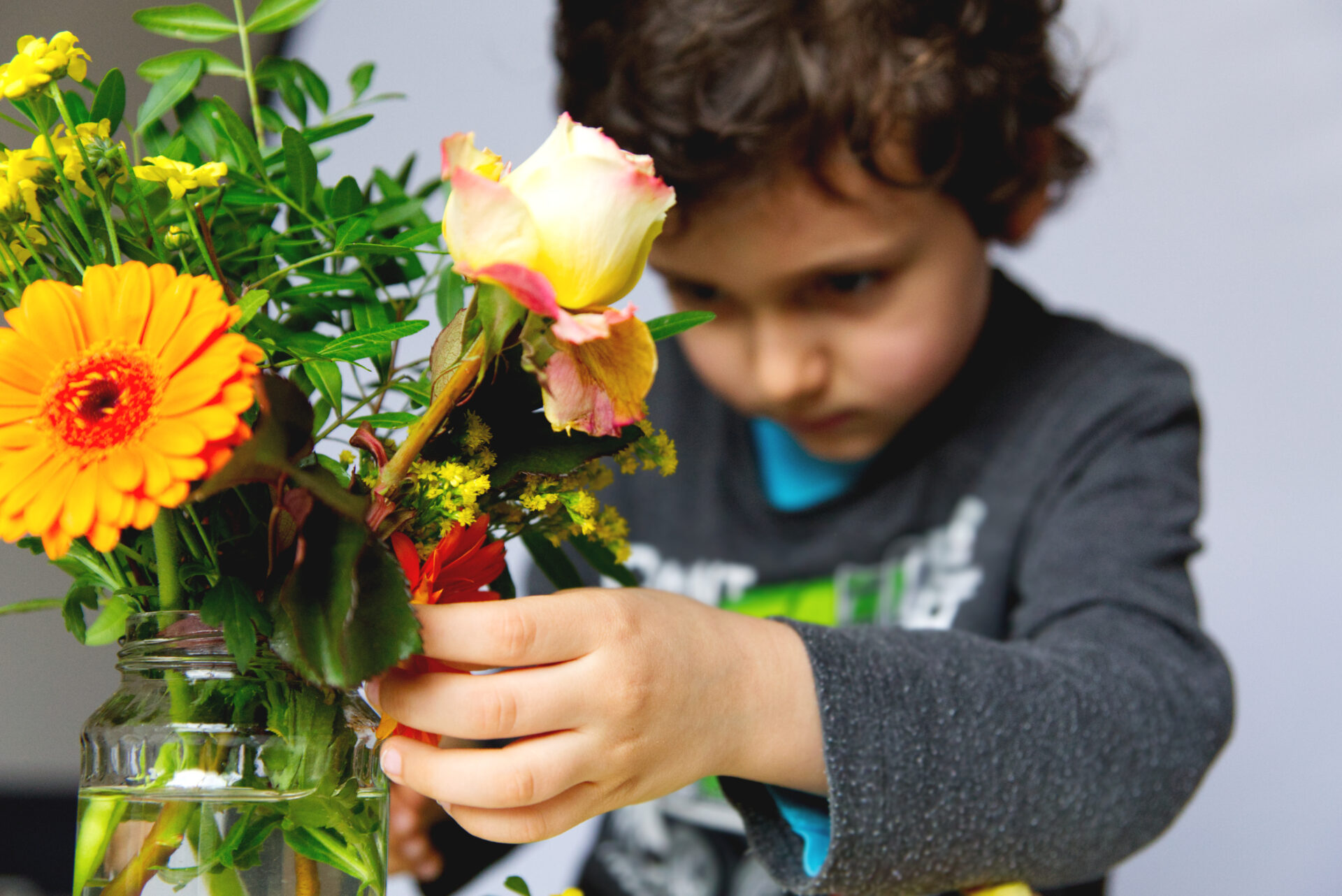Montessori Programes
Top 10 Montessori Activities For 3-Year-Olds
As parents, we all want the best for our children, especially when it comes to their education and development. And when it comes to the Montessori method, many parents are intrigued by its unique approach to learning. The Montessori method emphasizes hands-on, child-led learning, and encourages children to develop independence, self-confidence, and a love of learning. But with so many activities out there, it can be overwhelming to figure out which ones are best for your child. That’s why we’ve compiled a list of the 10 best Montessori activities for 3-year-olds, to help you give your child the best possible start in life.

1. Fastening and Unfastening Buttons
One of the most popular activities in any Montessori classroom is the fastening and unfastening buttons activity that you will find on the Practical Life shelf. This activity is designed to teach young children practical life skills by helping them learn how to manipulate and handle buttons on clothing. To begin the activity, children are provided with clothing items such as shirts, jackets, or pants with buttons. This is an ideal activity for children around three years old who are just starting to learn how to dress and undress themselves.
As a teacher or parent, you will need to demonstrate how to fasten and unfasten buttons, starting with larger and easier-to-manipulate buttons. As children become more proficient, you can present them with smaller and more challenging buttons to help them develop their fine motor skills and improve their dexterity. Overall, the Montessori fastening and unfastening buttons activity is an excellent way to teach children practical life skills that they will use throughout their lives.
2. Moving a Chair
The seemingly simple task of moving a chair actually requires a multitude of different skills. Children must utilize their muscles, balance, and spatial awareness in order to successfully relocate a chair from one spot to another. To engage in this activity, you’ll need a chair that is appropriately sized for a child. Demonstrate to the child how to lift the chair by placing their hands beneath the seat, and then escort it to the desired destination. You may also wish to exhibit how to pivot the chair in order to position it correctly.
Moving a chair is a valuable lesson for young children as they learn how to safely and efficiently move chairs, as well as manipulate their environment. This action also helps children develop their gross motor skills, which are crucial for activities such as running, jumping, and climbing.
Furthermore, the activity encourages coordination and spatial awareness. By mastering how to navigate through space while carrying a chair, children can better comprehend their surroundings and move through them in a secure manner.
3. Folding Activities
Including folding activities in the Practical Life curriculum is highly recommended. These activities are effortless to set up and require items that are readily available at home. To introduce the concept of folding to a child, it is advisable to start with smaller items such as napkins, handkerchiefs, tea towels, or placemats. Once the child has mastered folding these smaller items, larger items such as pillowcases and clothing can be introduced.
Folding activities are beneficial for children’s development as they help them improve their fine motor skills, concentration, and independence. Additionally, these activities teach children how to care for their clothing, promoting a sense of responsibility. By folding clothes, children also learn about organization and order
4. Matching Keys to Locks
The Montessori lock and key exercise is a Practical Life task aimed at fostering problem-solving and fine motor skills in children. It entails matching keys of differing shapes and sizes to their corresponding locks. If you don’t possess locks and keys, a quick visit to the hardware store may be required. To perform this exercise, you’ll require three locks of varying sizes with corresponding keys. The locks should be placed on a tray, separated from the keys but locked.

Begin by demonstrating the goal of the exercise to the child, then let them explore the locks and keys. Why it’s advantageous: Matching keys to locks can aid children in developing problem-solving skills. To match the keys to the locks, children must use their cognitive abilities to determine which key corresponds to which lock. Furthermore, the activity promotes the development of fine motor skills, which will have an impact on later activities such as writing and drawing.
5. Brush and Dustpan
In a Montessori environment, it is crucial for young children to learn practical life skills, such as using a brush and dustpan. This essential skill enables children to clean up spills and messes that occur naturally in the classroom. Whether inside or outside, all you need to do is set up an activity with something on the floor or table that needs sweeping up. By demonstrating the goal of the activity, you can set the child up for success.
This activity has many benefits for children. It teaches them important life skills and instills a sense of pride and care for their environment. The use of a brush and dustpan also helps develop fine motor skills and promotes a sense of independence. Overall, this practical life activity is a necessary and valuable addition to any Montessori classroom.
6. Sorting Objects by Size
The Sensorial activity of sorting objects by size in Montessori education helps children learn to differentiate and comprehend objects based on their size. To conduct this activity, you can use any objects of varying sizes available at home, as long as they are consistent in the material. Wooden spoons or measuring cups can be used as examples. Place the objects in an unorganized way on a tray and demonstrate to the child how to sort the objects by size. Begin by arranging the largest items first and gradually move towards the smallest.
This activity is beneficial to young children as it enhances their visual discrimination skills, hand-eye coordination, and concentration. These skills can be applied in other areas, such as reading and writing, where children need to differentiate between letters and words.
7. Washing Dishes
The Montessori Practical Life exercise of dishwashing is categorized under Care of the Environment activities. These activities aim to instill in children the importance of maintaining a tidy and clean environment while nurturing independence and responsibility. To perform this activity, you will require a stool, an apron, washing up liquid, a sponge, a drying rack, and a dish towel.
Demonstrate to the child how to wash dishes and then allow them to explore. Initially, pouring and splashing may be more common, but this will not last. The benefits of this activity are manifold. It fosters the child’s independence, concentration, and fine motor skills, in addition to instilling a sense of responsibility and care for their environment. This activity also instills a sense of accomplishment and purpose as they learn to perform real-life chores, contributing to their self-esteem development.

8. Flower Arranging
Arranging flowers in a vase is a wonderful Practical Life activity that is easy to do. You can either use flowers bought from a shop or gather wildflowers for added adventure. You can even make it more enjoyable by taking a stroll in nature and collecting the flowers yourself.To get started, you will need a vase, flowers, a pitcher of water, and safety scissors (if the child is ready). Place all the materials on a tray and demonstrate to the child how to arrange the flowers in the vase, and how to trim the stems if necessary.
This activity is beneficial in many ways. It helps children develop their coordination and fine motor skills. It also teaches them about order and attention to detail and instills a sense of responsibility. Moreover, it is an excellent opportunity for children to connect with nature and cultivate an appreciation for the natural world.

9. Cutting Fruit
The Montessori method incorporates a Practical Life activity of cutting fruit, which involves using a child-sized knife to cut various fruits into pieces. To prepare for this activity, gather a variety of fruits like bananas, apples, and oranges, along with a child-sized knife and a cutting board.
Demonstrate to the child how to properly hold the knife and safely cut the fruit into pieces. For small hands, you can try using the wavy knives available on Amazon. This activity has several benefits, including the development of fine motor skills and hand-eye coordination.
It is also a part of the Montessori Practical Life curriculum, which emphasizes the importance of practical skills that children can use in their daily lives. By giving children opportunities to learn practical skills, the Montessori approach fosters independence and competence.
10. Spreading Toppings
A simple and useful Practical Life activity for 3-year-olds is spreading toppings on crackers or bread. This Montessori activity involves spreading various toppings, such as cream cheese, peanut butter, or hummus, onto crackers using a child-sized knife or spoon. All that is required for this activity is a topping, crackers, a child-sized plate, and a knife or spoon.
To begin, demonstrate to the child how to hold the knife or spoon securely and spread the toppings onto the crackers safely. This activity is beneficial because it promotes independence and self-esteem in children. They can develop their fine motor skills and hand-eye coordination while spreading toppings onto crackers.
11. Threading
Threading activities in the Montessori method require children to string objects like buttons or beads onto a shoelace or string. This activity is flexible and easy to set up using items already available at home. For a simple DIY threading activity, you can use colorful jumbo-sized straws (ideal for beginners) and either woolen string, thread, or a shoelace. Cut the straws into smaller segments and place them on a tray with the string.
First, demonstrate the activity to the child before allowing them to explore the materials. Threading activities help children develop their concentration and focus while improving their fine motor skills. As they manipulate objects and strings, children are also strengthening their hand muscles and enhancing their hand-eye coordination.

12. Matching Colors
The Montessori Sensorial curriculum includes an activity to match colors, aimed at teaching young children how to differentiate between different hues. This activity can be conducted using basic materials such as colored paper or paint swatches. To begin, place the color tablets on a tray and demonstrate to the child how to sort them by matching pairs of the same colors.
Matching colors is a beneficial exercise as it helps children develop their visual discrimination skills and concentration. Additionally, it can enhance their language skills by facilitating discussions about the properties of different colors.
>> Read More: Top 10 Montessori Activities For 2-Year-Olds
